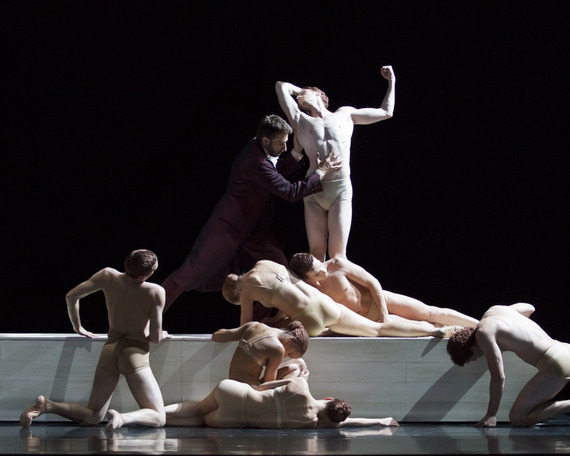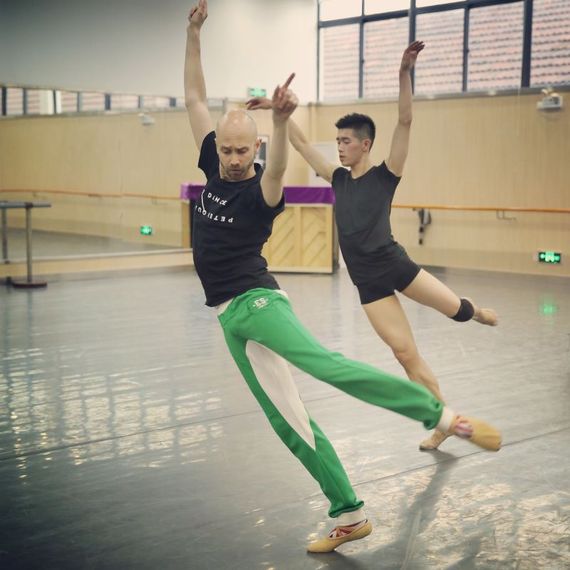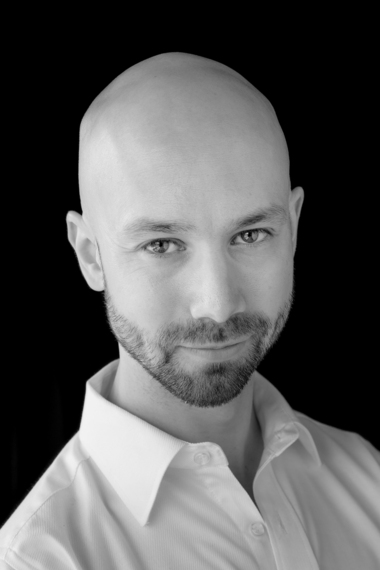I've known Peter Quanz since our ballet training years at Canada's Royal Winnipeg Ballet Professional Division. I have always admired Peter for his courage as a choreographer in taking on supreme artistic challenges and creating inventive, thought-provoking art. It has been a joy to see Peter succeed in what is an incredibly demanding and difficult career path.
I was thrilled that Peter agreed to share with 4dancers readers a bit about his life-changing adventures; his passion and drive for creating cutting edge choreography; and of course, his lovely humanity in connecting with artists across vastly different disciplines and languages. We spoke for about an hour over Skype while he was on a break from rehearsals. This is the second part of a two part series.
~~~
KM What is important to you about the people you collaborate with on your "team"?
PQ I look for strong people. A truly vulnerable, and intense artistic collaboration takes a self understanding and a strength to trust yourself that some people are uncomfortable with. I endeavor to be polite in the way that I work, but I can be confrontational. It cannot be safe, but it should be genuine and so I look for people who seem to be strong enough to manage that.
I don't ever want to be surrounded by "yes" people. People who have vastly different aesthetics are always interesting, because that creates a fissure, a kind of crack in the viewpoint, or the perspective in the way that we work together. It's in that friction that sometimes things spark, and I'm excited by that.
I choose team members who want to be part of a messy collaboration. The lighting designer has to discuss the choreography. If there is a musician they might be involved with placement with equipment on stage. Sometimes the dancers are really involved with developing a costume, because it shapes the way the choreography moves. For one piece we developed a tutu that was on a flexible hoop, and the shape of the costume completely informed the choreography, because the tutu bounced and folded up and moved in a way that was really interesting.
KM You have worked with dancers from many different cultural heritages and backgrounds. How do you connect with dancers, especially if there is a language barrier?
PQ I've had the challenges of working with dancers in Russia, Siberia, and now China. These have been opportunities for me to learn languages and to learn how to communicate with more body language. I've often only had a very small verbal vocabulary, and I have to find out how to guide people through a creative process when the dancers all think differently than I do, because they come from a completely different world. It is thrilling for me, because it makes me observe, and watch them to see who they are.
In 2015 I spent 5 months in China. It is extremely demanding and exhausting, to rehearse five hours a day without an interpreter in Chinese. My Chinese is not very good, but it draws us together. It makes everyone laugh when I say the wrong thing, or when they have to learn that my use of Chinese vocabulary might actually mean the opposite to what it normally means for them, but they learn that I'm trying to say. They learn my values and that I'm being vulnerable with them.
One of these projects was with the Wuxi Song & Dance Theatre, close to Shanghai. The company dancers use Chinese dance technique (not classical ballet or contemporary technique). I had to quickly learn how they moved and related to music. They had these beautiful ways of using their hands and incredible ways of moving very low to floor that are exceptionally fluid, but also is something that I've never encountered before.
Being able to absorb that, and infuse that language and physicality into my understanding of movement, makes a new thing. It also requires that I don't undermine what they've done for years. I don't ever try to say that what I'm doing is better than what you do. It's different, we're learning. We are understanding our own practices better by questioning the boundaries that separate them.
KM What has been your biggest joy this past year?
PQ I was so proud of Q Dance. This year, in our season the dancers worked with such love for each other and the work. I felt that in the process each of the dancers danced better than I've ever seen them dance. I was so proud of them and watching them grow is exciting. I really see that as an area of interest for me in the future; artistically. The show is not about me, the show is about us.
___________________________________________
Peter Quanz has created ballets for some of the world's leading ballet companies including the Mariinsky Ballet, American Ballet Theatre, the Royal Ballet (Linbury Theatre), Les Grands Ballets Canadiens de Montréal, the Royal Winnipeg Ballet, Hong Kong Ballet, the National Ballet of Cuba, and the National Ballet of Canada. He created In Tandem for the Guggenheim Museum's Works & Process series.
Peter founded Q DANCE in 2010 to provide an opportunity to collaborate with a chamber group of exceptionally talented artists and to allow him to create his own programs. The company has close associations with the Royal Winnipeg Ballet and had a Joyce Theatre season in 2012 in New York City.
Peter Quanz has been awarded the prestigious State Medal in Literature and the Arts by President Vyacheslav Nagovitsyn of the Republic of Buryatia, Russia. The state medal recognizes a significant creation of literary or artistic work for the Republic, and acknowledges Peter's evening of three ballets made for the Republic of Buryatia in 2011. This same programme was performed at the new Bolshoi Theatre in Moscow in October 2011.
A recipient of the Clifford E. Lee Award, Canada's national award for young choreographers, Peter has also been supported by grants from the Canada Council for the Arts, the Chalmers Foundation, and the Judy and Henny Jurriens Choreographic Fellowship. He is a graduate of the Royal Winnipeg Ballet Professional Division.
This post first appeared on 4dancers.org .



